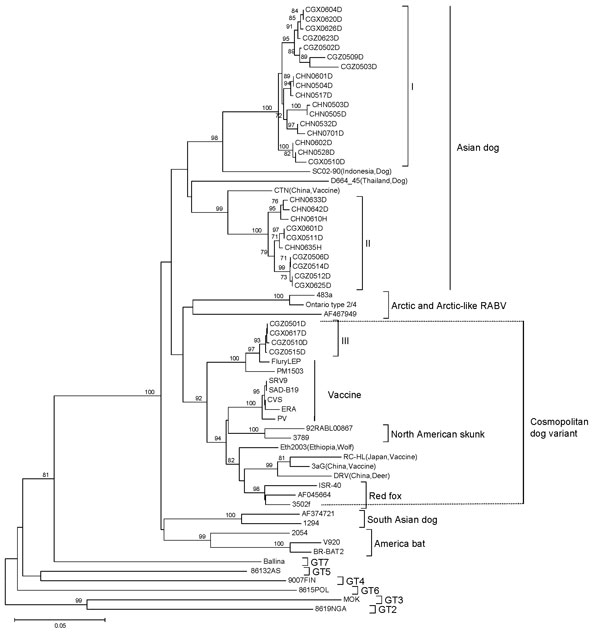Volume 15, Number 8—August 2009
Research
Molecular Epidemiology of Rabies in Southern People’s Republic of China
Figure 3

Figure 3. Neighbor-joining phylogenetic tree of 60 specimens of rabies virus (RABV) from the People’s Republic of China, 2005–2007, and different genotypes (GTs) from other areas based on a 720-nt (nt 704–nt 1423) nucleoprotein (N) gene fragment of RABV. Numbers at each node indicate degree of bootstrap support; only those with support >70% are indicated. Scale bar indicates nucleotide substitutions per site.
Page created: October 04, 2010
Page updated: October 04, 2010
Page reviewed: October 04, 2010
The conclusions, findings, and opinions expressed by authors contributing to this journal do not necessarily reflect the official position of the U.S. Department of Health and Human Services, the Public Health Service, the Centers for Disease Control and Prevention, or the authors' affiliated institutions. Use of trade names is for identification only and does not imply endorsement by any of the groups named above.